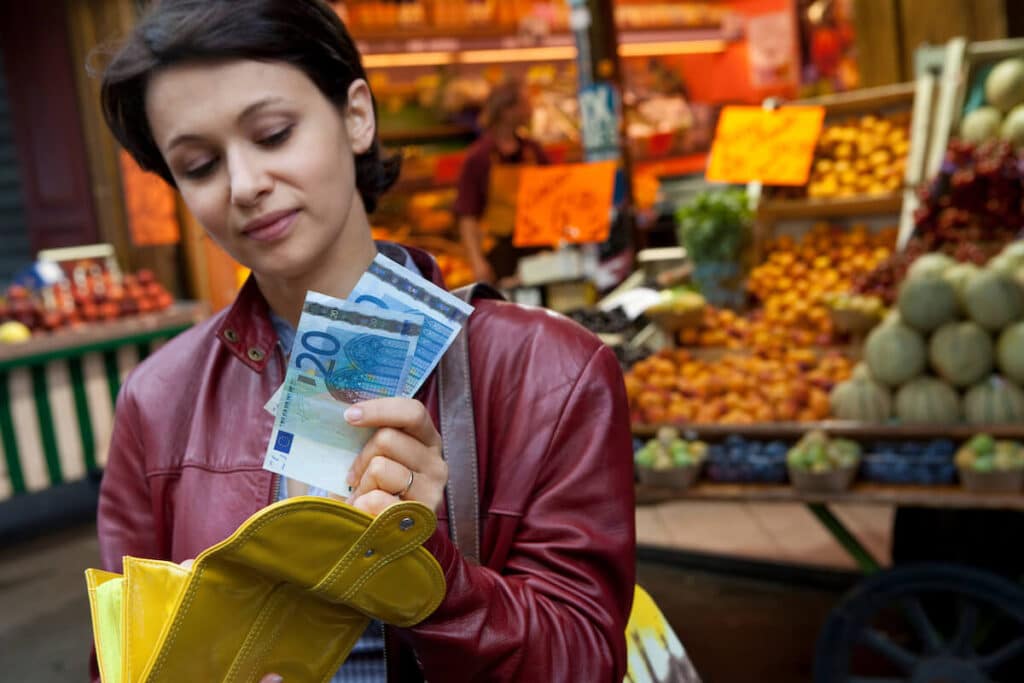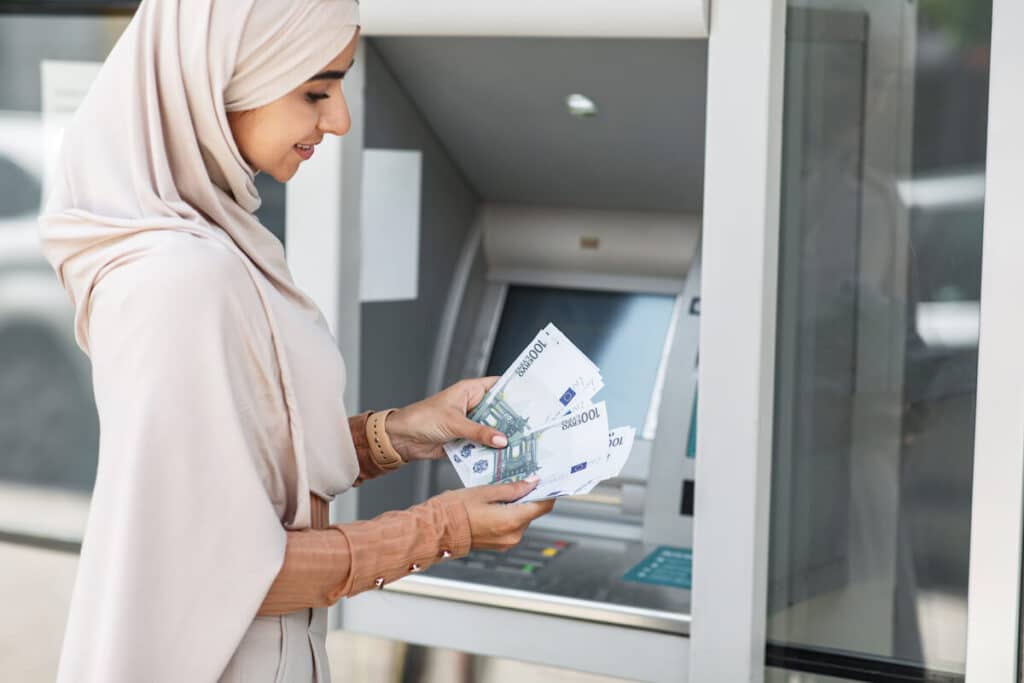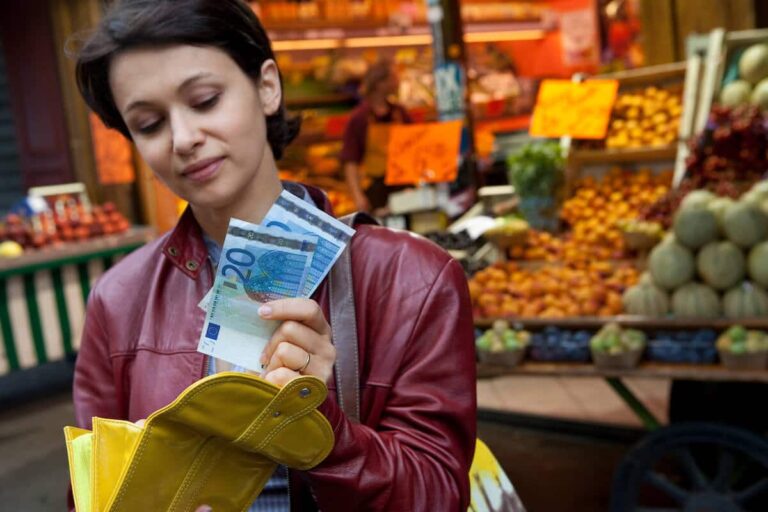The euro (EUR), the official currency of the European Union (E.U.), was one of the most ambitious currency changeovers in history when it was introduced two decades ago. Overnight, the euro replaced 11 different currencies across European member states.
However, not all countries in the European Union use the euro, and several non-EU countries have embraced this European currency. Get answers about the euro in this guide, whether you’re planning to travel to Europe or send money to friends and family there.
Which E.U. countries use the euro?
In 1992, representatives from 12 European countries—Belgium, Denmark, France, Germany, Greece, Ireland, Italy, Luxembourg, the Netherlands, Portugal, Spain and the United Kingdom—signed the Maastricht Treaty, an agreement to promote the free movement of goods, capital, and people between member states.
In order to reach this goal, plans were made to introduce a central bank and a single currency.
On January 1, 2002, all the countries who signed the Maastricht Treaty except for Denmark and the U.K. officially replaced their currencies with the euro. In addition, Austria and Finland agreed to the changeover, bringing the number of countries to 12. More countries joined as their economies met the criteria set by the European Central Bank.
Twenty years on, 20 out of 27 EU member states have adopted the euro:
- Austria
- Belgium
- Croatia
- Cyprus
- Estonia
- Finland
- France
- Germany
- Greece
- Ireland
- Italy
- Latvia
- Lithuania
- Luxembourg
- Malta
- the Netherlands
- Portugal
- Slovakia
- Slovenia
- Spain
Together, these states make up the Eurozone, a group of EU member states who have fully embraced the euro as their national currency.
Which countries in the European Union do not use the euro?

Several EU member countries have pledged to adopt the euro as their official currency but have not yet met the conditions to do so. These include Bulgaria, the Czech Republic, Hungary, Poland, Romania, and Sweden.
If you plan to go to any of these countries or send money to friends and family living there, you will need to exchange your cash for the following currencies:
- Bulgaria: Lev (BGN)
- Czech Republic: Koruna (CZK)
- Hungary: Forint (HUF)
- Poland: Zloty (PLN)
- Romania: Leu (RON)
- Sweden: Krona (SEK)
One of the conditions for joining the EU is adopting the euro when all the criteria have been met. However, the majority of voters in Denmark rejected the idea of adopting the euro. As a result, Denmark was granted an opt-out after negotiations and the country has retained the Danish krone (DKK) as its currency.
Which countries are in the European Union?
The European Union is a political union made up of 27 member countries within Europe. After World War II, European governments pledged to work together in an effort to create lasting peace on the continent.
As of this writing, the 27 member states that make up the EU are:
- Austria
- Belgium
- Bulgaria
- Croatia
- Republic of Cyprus
- Czech Republic
- Denmark
- Estonia
- Finland
- France
- Germany
- Greece
- Hungary
- Ireland
- Italy
- Latvia
- Lithuania
- Luxembourg
- Malta
- The Netherlands
- Poland
- Portugal
- Romania
- Slovakia
- Slovenia
- Spain
- Sweden
The countries of Iceland, Liechtenstein, and Norway wished to retain their currency while still participating in the single market. These states are in the European Economic Area (EEA) but not the European Union.
Iceland continues to use the kròna (ISK), Liechtenstein uses the Swiss franc (CHF), and Norway uses the kroner (NOK).
Switzerland opted to stay out of both the EU and the EEA but is part of the single market. This gives Swiss nationals the right to live and work in EU countries, provided they have a job or source of income.
Switzerland uses the Swiss franc (CHF).
Do any other countries use the euro?

Just as some countries outside of the U.S. choose to make the U.S. dollar legal tender, some countries outside of the euro area have adopted the euro as their official currency.
The Principality of Monaco, the Republic of San Marino, the Vatican City State, and the Principality of Andorra all have the right to produce limited numbers of euro coins—but not to issue euro banknotes.
You will also find euros used in some French overseas territories, like the Saint-Pierre-et-Miquelon islands off the eastern coast of Canada and the Caribbean island of Saint-Barthélemy.
The countries of Kosovo and Montenegro also use the euro as legal tender, although they are still in negotiations to join the EU.
Who regulates the euro?
The European Central Bank (ECB) manages the euro with the aim of keeping prices stable across the eurozone. The ECB sets interest rates, manages foreign currency reserves, and oversees regulation by national governments.
Monetary policy across the EU is set by a governing council made up of the governors of EU national banks and implemented by the ECB.
The European Commission decides if a country can be admitted to the EU and helps guide them through the process.
What about Brexit?
The United Kingdom (U.K.) was one of the 12 countries that signed the Maastricht Treaty. However, the U.K. government opted out of the euro, choosing to keep the pound sterling (GBP) as the official currency of England, Scotland, Wales, and Northern Ireland.
The decision of whether to move toward the EU’s goal of closer political, economic, and cultural ties between its members or to break away entirely remained a controversial issue in British politics for over 20 years. Finally, the question was put to a national referendum in June 2016.
It was a close call, but the majority of voters chose to leave the EU in a move dubbed “Brexit” (for “Britain” and “exit”). The U.K. officially left the EU in 2020.
Now that they’ve departed the EU, new rules on who can live and work in the U.K. are being negotiated. However, the currency remains the same, as the U.K. never adopted the euro as its national currency.
How to buy European currency

When you visit a Eurozone country or a country that has adopted the euro, you can exchange your home currency for euros at a bank or credit union, foreign exchange store, or through an ATM if you have a debit card.
You may also be able to use your credit card to make purchases and pay in euros instead of your home currency.
Another option is to use a prepaid debit card loaded with euros. This type of payment card works in a similar way to a debit card, but it’s not connected to a bank account.
Using euros your way
The euro has changed travel across Europe by solving the problem of carrying multiple currencies on a trip. Over 20 countries now use the euro, and more are poised to join.
Exchanging currency is easy in Europe, but look out for fees and the exchange rate. Depending on what payment method you use, there may be fees and unfavorable exchange rates to deal with.
If you want to send money to someone—including yourself—it’s easy to use a money transfer app like Remitly.
With Remitly, you can choose what’s most comfortable and convenient for your recipients with our growing network of banks and cash pickup locations.
Download the app today and get started.
